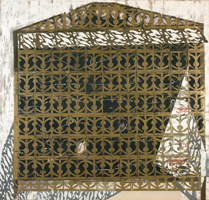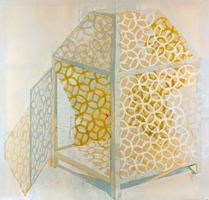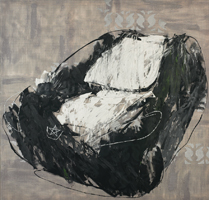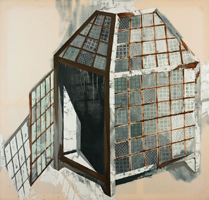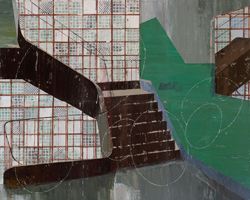WORK
2004./2008.
Symbol, Sign, Emblem, Ornament and Crime
Symbol is a link to eternity and is always usable. It is a bridge across which humanity is approached and interpreted, while to the initiated it reveals the supreme reality. But its phenomenality is vulnerable, it easily slips off into emblem, which can be manipulated and abused, which finally waters down into ornamentalism.
Ornament as form, of the blind instinctive consciousness, sleeps deep int he blood, emblem mirrors the life of the heart, sign mirrors activity of the head, and symbol, true reflection of reality, stands on the way to the centre of our most authentic being.
There are three gunas in man and in nature, says the Bhagavadgita, because of which our world appears like reality, but is in fact nothing but a play of properties, of illusions. These are in order sattva (purity, reality), rajas (activity, feeling, fire of passion) and tamas (blind urge, darkness, lethargy).
A mix of these in various ratios corresponds to the state of consciousness of the individual being, group or nation, and is manifested in the embellishment (decoration) of the space of life with signs, emblems or ornaments.
Natural lucidity mirrors the strength of the sign (not the power that inheres in symbol, concealed behind the sign) and in mystic enthusiasm controlled and aided by passion creates elevated and emblematic apparitions that lead us with great certainty to the fallacy of superstition. With drowsy yawns, tamas draws us into the endless sea of repetition, of comfortless return.
When we try to bring the incomprehensible (which is reality) down to the intelligible level, the concept comes into being, the picture or the sign, and it, although mediated by the understanding, is not a faithful reflection of reality.
Sign is surrogate for symbol, and catches up with every traveller.
Trough the intermediaries of reason and emotion, and linked with the forces from the depths of the subconscious, the Emblem emerges as imitation of symbol.
Ornament is a pathological turning of emblem into sign, a tattoo of hoplelssness on the arm of the prisoner.
And so, although the world, sometimes, seems to us as a charming place of free people, it is after all nothing but a cage, a cave, or a dungeon, while the field of freedom must be desired and sought deeper in the self, in the centre, on the far side of sign, emblem and ornament, the purpose of which is to present unacceptable existence as life, and thus make the world to an extent bearable.
